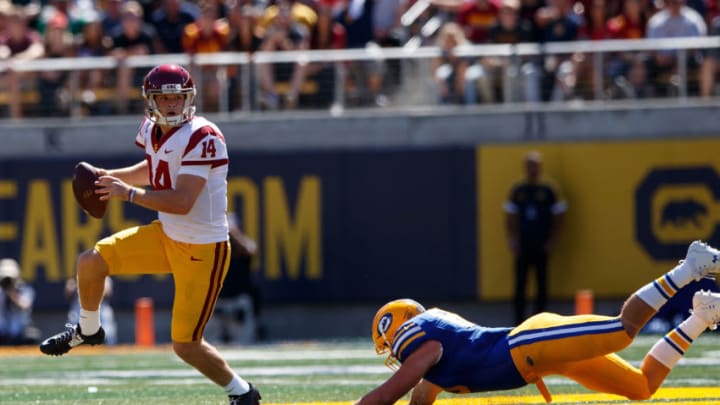The 2018 NFL Draft could be the “Year of the Quarterback,” with as many as six signal-callers potentially destined for the first round next April. Each week, we’ll be taking a look at five quarterbacks who helped or hurt themselves on their path to potential NFL stardom.
Each year, the quarterback position becomes the most talked-about storyline of the NFL Draft. Do the players who led their collegiate teams to glory have what it takes to win at the next level? Do physical attributes always outweigh production? Are certain college offenses too detrimental to a prospect’s development for them to have success in the NFL?
The way to effectively answer these questions remains an inexact science but is also a large part of what can make or break an NFL team’s chances of future success. The Seahawks took a chance on the traditionally-undersized Russell Wilson and it has turned into the most successful run in franchise history. On the other hand, outstanding college players like Johnny Manziel, Tim Tebow, and Robert Griffin III have all seen more struggle than success in the NFL for a myriad of reasons.
We’ll be taking a look at the top five NFL Draft prospects at the quarterback position for the 2018 class and breaking down who helped, or hurt, their draft stock on a weekly basis. While there’s much more that goes into the evaluation of a draft prospect than production, a lack of it can slide you down draft boards, as we’ve seen already a bit with Wyoming’s Josh Allen. So, without further ado, let’s take a look at my top five quarterback prospects in the 2018 Draft and where they stand heading into Week 5 of the college football season.

Falk was a surgeon in the Cougars’ blowout of Nevada this week, throwing for 478 yards with five touchdowns and zero interceptions. We’ll hear “system quarterback” due to Falk playing in the Mike Leach Air Raid offense, but there’s no denying that the 6’4″ senior is one of the most efficient and accurate quarterbacks in college football. Falk joined the Cougs as a walk-on in 2013 and has posted a ridiculous 69.6 percent completion rate in 34 games as Washington State’s starting quarterback.
Air Raid quarterbacks have enjoyed draft success over the last couple seasons, with Jared Goff (No. 1 overall, Rams) and Patrick Mahomes (No. 13 overall, Chiefs) both being selected in the top half of the first round. While Falk shares the similar physical traits (6’4″, 223 pounds), he doesn’t possess the same arm strength. With Falk averaging just 7.3 yards per attempt in his Cougars career, he’ll have to convince scouts that he has the ability to throw the deep ball efficiently in order to have success in the NFL.
Falk displays great footwork in the pocket and has a quick release, while also being able to go through progressions and not lock on to his first read. The Air Raid system requires its quarterbacks to diagnose defenses and coverages quickly in order to maintain tempo, and Falk is often able to do that.
The biggest concern for me remains Falk’s arm strength and accuracy on the deep ball, as he can have a tendency to make errant throws when the Cougars decide to take shots down the field. Falk doesn’t drive the ball well, causing many of these downfield throws to float in the air long enough for defensive backs to gain good position to locate and play the ball. I’m not as concerned as others at Falk’s limited experience taking snaps under center, as there aren’t many collegiate offenses doing regularly, to begin with, but Falk will have to prove that he can hit the home run ball with touch and accuracy to become a starting quarterback in the NFL.
